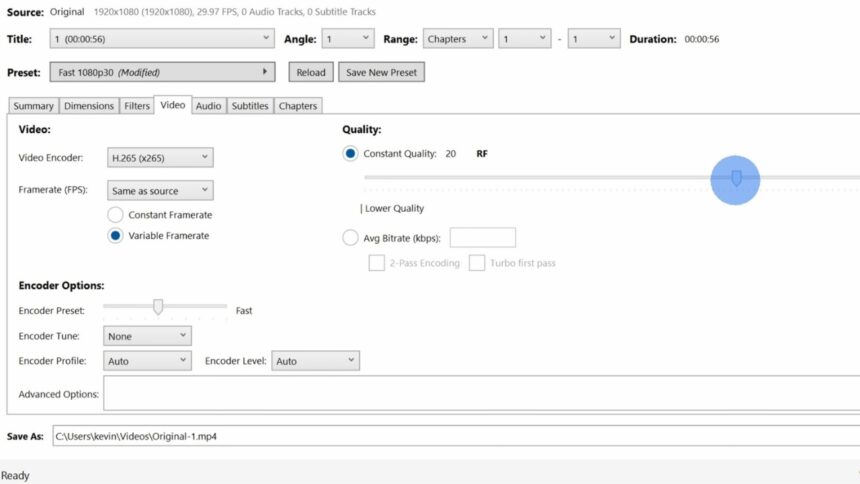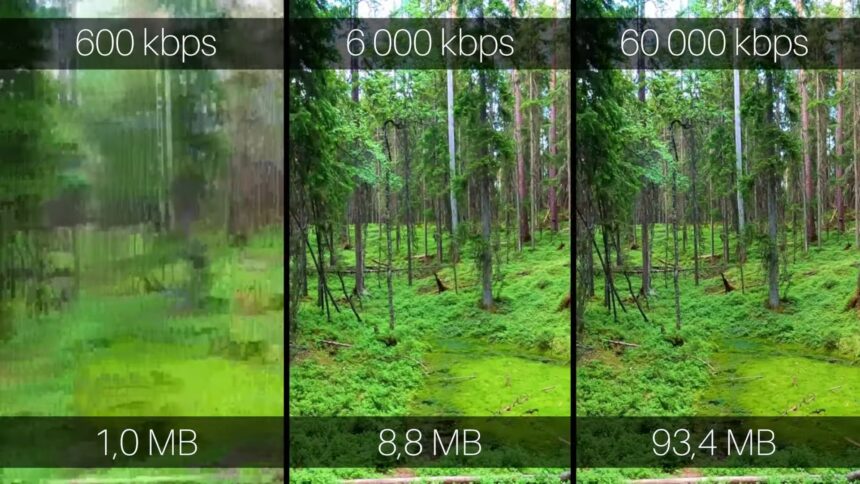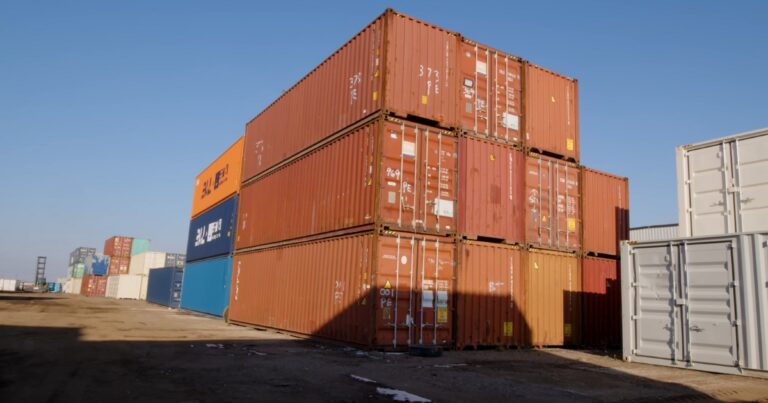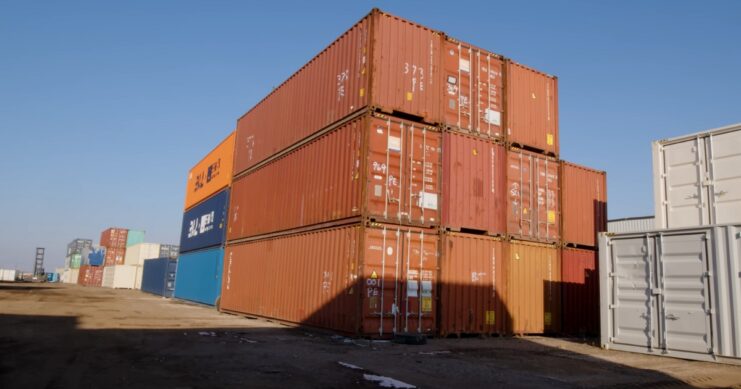In the modern world, video content has become a tool with which we communicate, entertain, and learn. With the ever-evolving technological landscape, efficiently storing and transmitting this content has become crucial.
But here’s a burning question: does shrinking video size compromise its quality? In this guide, we will discuss the delicate connection between your footage size and quality and break down the details and impacts of compression.
Compression in a Nutshell

This is the cornerstone of managing video size and quality. But what exactly happens when your footage is compressed?
The Basics
At its core, compression is about reducing the size of a video file without significantly compromising its quality. This process involves eliminating redundant or less important data within the file.
Types of Compression
- Lossy: This method reduces file size by permanently removing certain information, leading to some loss of quality.
- Lossless: This type compresses data without any loss of quality, though the size reduction is less significant compared to lossy compression.
Why Compress Videos?
Compressing process is essential for easier storage, faster upload and download times, and efficient streaming, especially over limited bandwidth connections.
Anyone who is looking to explore advanced video editing and compression techniques should check out the creative suite, which provides a range of tools for both beginners and professionals. It is available online, so you will not have to bother with downloading or installing it – very practical and handy.
Impact on Quality
- Resolution and Bitrate: The resolution and bitrate are critical factors in determining video quality. Lowering either can reduce file size but may also affect the clarity and smoothness of the video.
- Artifacts of Compression: Over-compression can lead to artifacts like pixelation, blurring, and blockiness, which degrade the viewing experience.
- Balancing Act: The key is finding the right balance between file size and acceptable quality, which depends on the intended use and audience of the video.
Techniques for Reducing Video Size

Reducing video size is a technical process involving several techniques. Knowing these methods helps in making informed decisions about the compression.
Common Compression Techniques
- Reducing Resolution: Lowering the video’s resolution decreases file size but can significantly impact visual clarity, especially on larger screens.
- Adjusting Bitrate: Reducing the bitrate reduces file size but can affect motion clarity and overall video smoothness.
- Frame Rate Reduction: Lowering the frame rate can decrease file size but may make the motion appear choppy or stuttered.
Advanced Methods
- Codec Optimization: Using advanced codecs such as H.265 can offer better compression efficiency compared to older codecs such as H.264, often with less noticeable quality degradation.
- Variable Bitrate (VBR): VBR adjusts the bitrate according to the complexity of the video content, offering a balance between quality and file size.
- Two-Pass Encoding: This method analyzes the footage in the first pass and then compresses it more efficiently in the second, often leading to better quality at smaller sizes.
One of the most effective free tools for compression is definitely Capcut’s video compressor. This tool goes through this process so seamlessly that you barely sacrifice the quality of your footage, and it is, of course, available online.
Real-World Considerations

In practical terms, the decision to compress your footage and by how much involves considering the context in which the footage will be used.
Use Case Scenarios
- Online Streaming: Services like YouTube or Netflix use compression to deliver smooth streaming experiences, especially for users with limited bandwidth.
- Professional Broadcasting: In professional settings, maintaining high quality is crucial, even if it means larger file sizes.
- Personal Use: For personal videos, such as those shared on social media, a balance between size and quality is often sought to ensure fast uploading and decent viewing quality.
Considerations for Reducing Size
- Target Audience: The expectations of the audience play a crucial role. A professional audience might demand higher quality compared to casual viewers on social media.
- Purpose of the Clip: Educational and informative videos might prioritize clarity and detail, while entertainment content might focus more on visual appeal.
- Distribution Platform: Different platforms have varying requirements and limitations for video size and quality, which must be considered during compression.
What Future Holds in Store

As technology advances, new trends and innovations in video compression are emerging, shaping the future of how we handle video content.
Emerging Technologies
- Artificial Intelligence in Compression: AI and machine learning are being explored for smarter, more efficient compression methods that can maintain high quality at lower sizes.
- Newer Codecs and Standards: Development of new codecs like AV1 promises improved compression efficiency, potentially revolutionizing video streaming and storage.
- 5G and Beyond: With the advent of 5G, higher bandwidth and faster speeds might reduce the need for aggressive video compression, allowing for higher-quality video streaming.
Challenges and Opportunities
- Balancing Quality and Accessibility: As resolutions and display technologies improve, the challenge is to deliver high-quality content without excluding users with limited bandwidth.
- Environmental Considerations: Efficient video compression can also contribute to reduced energy consumption in data centers, aligning with environmental sustainability goals.
- Innovation in Content Delivery: The future of video compression is not just about reducing file sizes but also about innovative ways to deliver and stream content efficiently.
Trade-Offs

Comprehending and managing the trade-offs between video size and quality is essential for anyone working with digital video. This section will break down how different factors influence these trade-offs and offer guidance on making optimal decisions.
Factors Influencing Compression Trade-Offs
- Content Type: The nature of the content plays a significant role. Fast-moving action scenes require higher bitrates to maintain quality compared to static scenes.
- Viewing Environment: The intended viewing environment, such as large public displays versus mobile devices, dictates acceptable levels of compression.
- Compression Algorithm Efficiency: The efficiency of the compression algorithm determines how much quality is retained at lower bitrates.
Making the Right Choices
- Assessing the Purpose: Clearly define the purpose of your video. Is it for professional broadcast, streaming, or personal use? This will guide your compression strategy.
- Know the Audience Expectations: Know your audience’s expectations and viewing devices. Higher quality is expected on professional platforms compared to casual social media viewing.
- Choosing the Right Tools: Utilize the best available tools and codecs for your specific needs. Advanced codecs can provide better compression with less quality loss.
FAQs

Can Compression Be Reversed to Restore the Original Quality?
No, once your footage is compressed using lossy compression, the discarded data cannot be restored to its original quality. Lossless compression, however, allows for restoration to the original state.
Does the Duration of A Video Affect Its Compression Efficiency?
The duration itself does not directly impact compression efficiency. However, longer clips inherently have more data to compress, which can make the process more challenging in terms of maintaining consistent quality.
Are There Specific Video Formats that Are Better for Compression without Quality Loss?
Formats like MP4 (using H.264 or H.265 codecs) are known for efficient compression with minimal quality loss. However, the choice of codec plays a more significant role in determining the quality after compression.
How Does Footage Compression Affect Audio Quality?
It primarily targets visual data, but if the audio is also compressed, it can affect its quality. This is often managed separately, allowing control over both video and audio quality.
Is It Possible to Compress a Video without Any Quality Loss?
Yes, through lossless compression, it is possible to compress it without any quality loss. However, the file size reduction is much less significant compared to lossy compression.
Does Compressing a Video for Mobile Devices Differ from Compressing for Desktop Viewing?
Yes, for mobile devices, it often involves lower resolutions and bitrates, considering the smaller screen size and potentially limited bandwidth. Desktop viewing typically allows for higher resolutions and bitrates due to larger screens and better connectivity.
Final Words
Reducing your footage size inevitably impacts quality, but the extent of this impact varies based on the methods and intent of compression. The process of compression lies in striking the right balance between file size and quality, considering the context and purpose of the video.
As technology evolves, so do the methods of compression, promising a future where high-quality video content can be more accessible and sustainable. The journey of video compression is one of continuous innovation, balancing the needs of storage, bandwidth, and visual fidelity.
Related Posts:
- Does Ginger Go Bad? How Long Does It Last?
- The Negative Effects of Caffeine On Health - 3 Tips…
- The Science Behind Compression Sleeves in Sports:…
- How To Choose The Right Size And Height Of Elevator Shoes?
- Flawless Fit for Every Body: Shapewear for Plus Size…
- Navigating the Waves: The Art of Replacement…




















